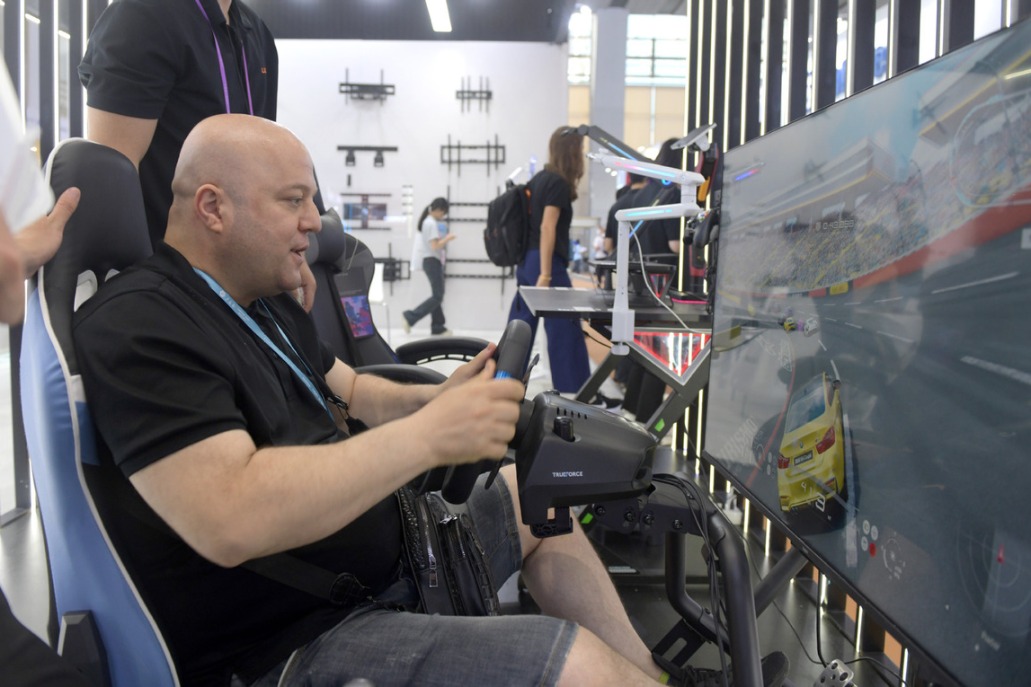Wearable band market sees healthy upsurge
By FAN FEIFEI | China Daily | Updated: 2021-11-03 09:54

Zhang Yuhan, a 29-year-old financial magazine editor in Beijing, is on the lookout for a smart wristwatch and has been trawling Alibaba Group Holding's Tmall and other e-commerce platforms to pick the best one.
"I want to buy a smart device that can analyze my daily exercise and tell me more about calories burned, heart rate changes, number of paces taken and distance covered. I haven't decided which one to buy because there are too many brands."
Not all sports lovers are undecided like Zhang. Many of them already have smart bands and smartwatches, which are set to record their daily running distance, duration of sleep and calories consumed.
Competition in the wearable band sector has become intensified as a slew of technology companies are ramping up efforts to launch more feature-packed models, which include health-tracking options and offer meaningful data about their health status.
The global wearable band market grew 5.6 percent year-on-year in the second quarter, with a total of 40.9 million units shipped, according to market research firm Canalys.
Wristwatches now account for 62 percent of global wearable band shipments, and the consultancy expects wristwatches to be the key growth driver in the wearable band category for the years to come.
Chinese tech giant Xiaomi Corp overtook Apple Inc to become the top-shipping wearable band vendor in the second quarter. The Beijing-based company shipped 8 million units during the period for a 19.6 percent market share.
Apple closely followed with 7.9 million units shipped, while Huawei Technologies Co ranked third with 3.7 million.
"Xiaomi made a wise move to hasten the release of the Mi Band 6, which is a more compelling device than its predecessor," said Cynthia Chen, a research analyst at Canalys, adding that Xiaomi's quick pivot to basic watches also helped the company boost its wristwatch shipments by 1.3 million units this quarter.
The Mi Band 6 performs day-today health tracking with a host of enhanced health monitoring features, such as heart rate monitoring, as well as a sleep tracking function that monitors naps and breathing during sleep. It also comes with stress monitoring, a deep-breathing guidance function and customizable tracking for women's health to provide users with comprehensive insights into their body and lifestyle.
"Vendors are attempting to make a big generational leap in smartwatch technologies. To stand out, they are improving fundamentals, such as user experience and battery life, creating their own distinct user interface and leveraging their respective ecosystems to draw out new and unique applications," said Jason Low, research manager at Canalys.
"Health tracking is the most prominent use case for smartwatches. The ability to deliver cutting-edge health-tracking features and to offer users meaningful data and actionable health insights will set winners and losers apart," Low added.
According to the latest forecast from consultancy Gartner, worldwide end-user spending on the overall wearable devices will total $81.5 billion in 2021, an 18.1 percent increase from $69 billion in 2020.
Smartwatch end-user spending increased 17.6 percent to reach $21.8 billion in 2020. Smartwatch growth, which was driven in part by new users entering the market, will continue through this year as new processor technologies and improvements to solid-state batteries increase battery life and shorten charging times, the consultancy said.
"The introduction of health measures to self-track COVID-19 symptoms, along with increasing interest from consumers in their personal health and wellness during global lockdowns, presented a significant opportunity for the wearables market," said Ranjit Atwal, senior research director at Gartner.
"Ear-worn devices and smartwatches are seeing particularly robust growth as consumers rely on these devices for remote work, fitness activities, health tracking and more."
As device-makers focus on improving sensor accuracy, the performance gap between medical- and nonmedical-grade wearables is closing, he said, adding that sensors built into wearable devices will be increasingly capable of more accurate readings, driving market growth over the next three to five years.























